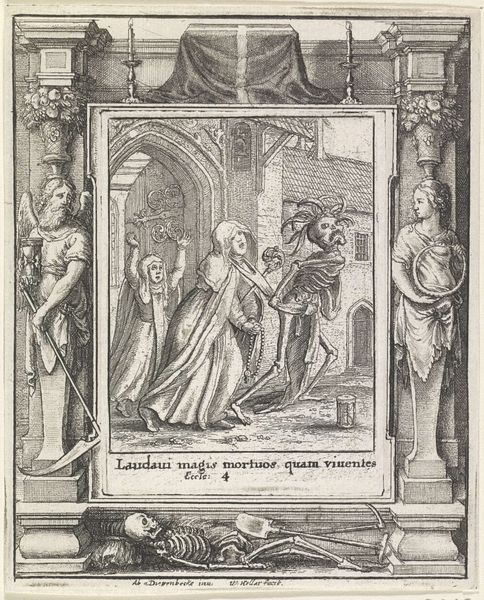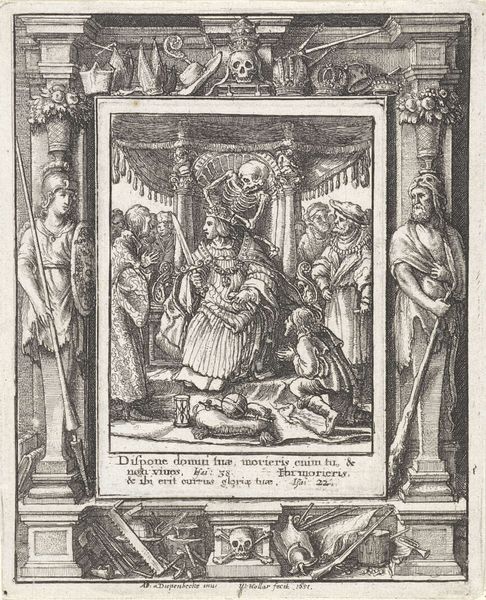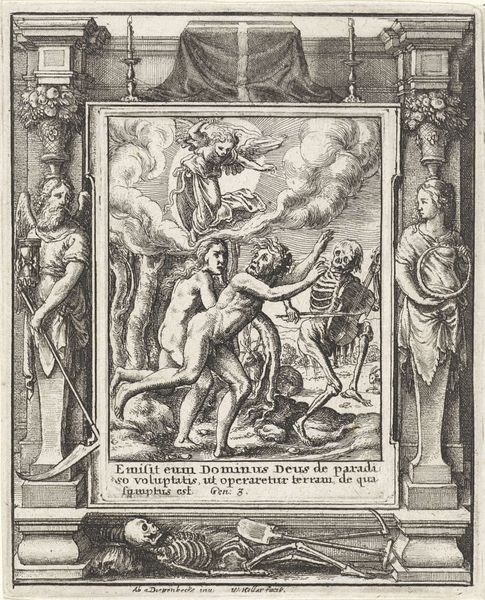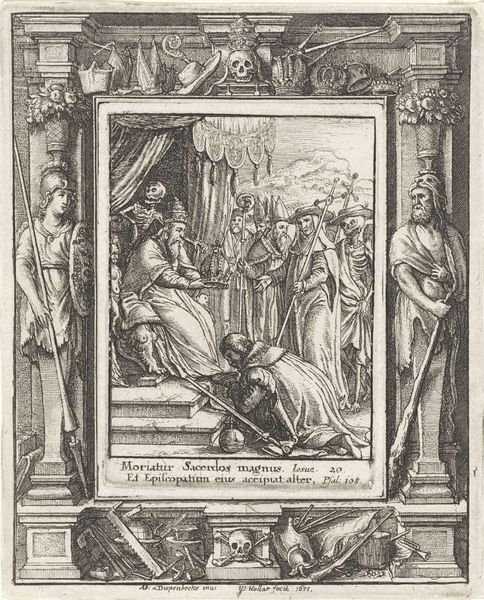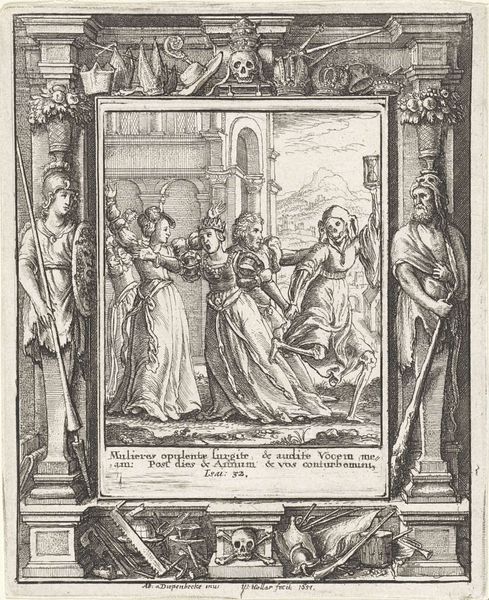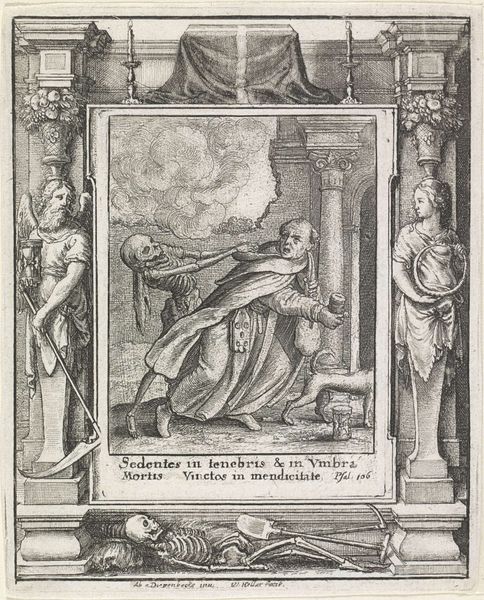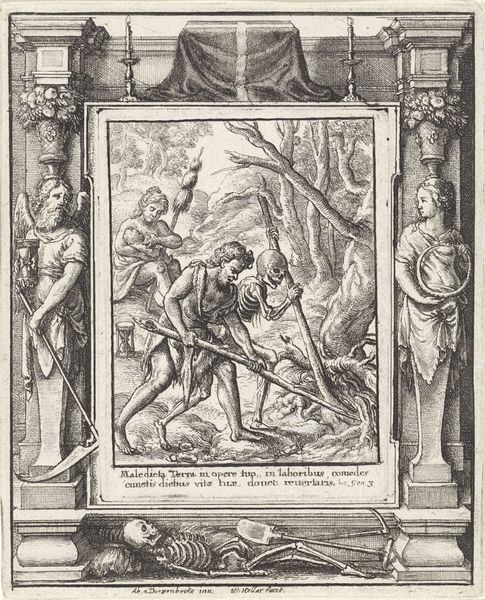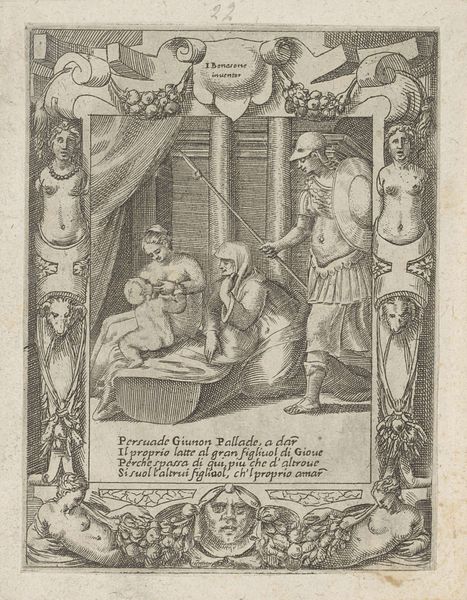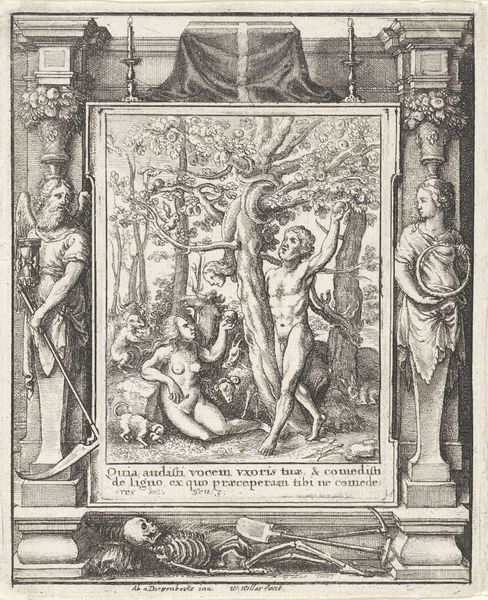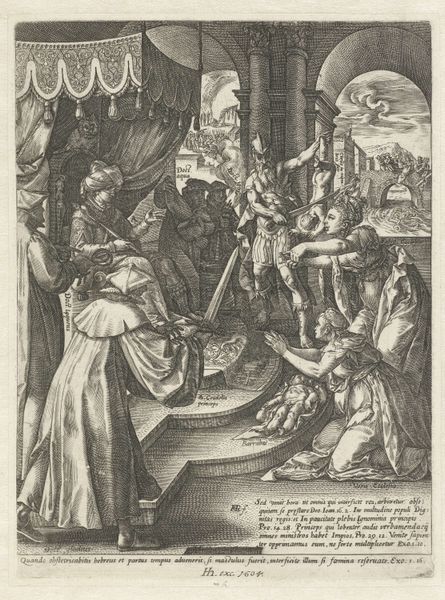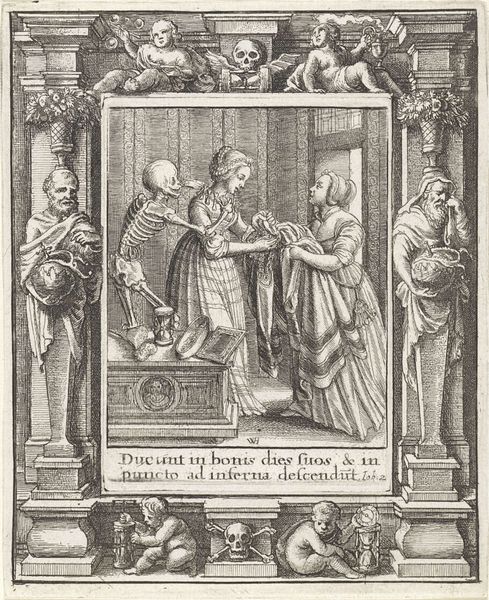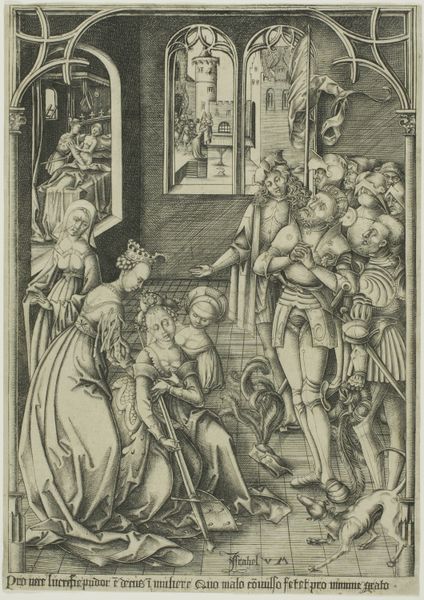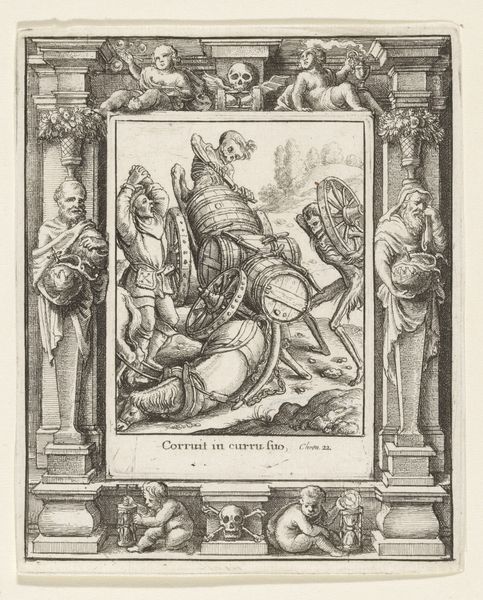
print, etching, engraving
#
allegory
#
baroque
# print
#
etching
#
history-painting
#
engraving
Dimensions: height 115 mm, width 95 mm, height 77 mm, width 55 mm
Copyright: Rijks Museum: Open Domain
Curator: Before us is a 1651 etching and engraving by Wenceslaus Hollar entitled "The Child and Death". It is currently housed at the Rijksmuseum. Editor: What immediately strikes me is the stark contrast in values, the darkness of the etching playing against the delicate precision of line work. The composition, though crowded, possesses an undeniable structural integrity, anchoring the eye. Curator: The artwork, crafted with etching and engraving techniques, portrays a stark allegory about the brevity of life. The symbolism draws from religious and philosophical traditions, commenting on human mortality through depictions of infancy confronted by death. We need to consider how plagues ravaged populations throughout Europe. These affected perceptions of both community and one’s place within it. Editor: Indeed, but consider the formal framework structuring this dark narrative. Note how Hollar uses light and shadow to guide the viewer's eye, highlighting the gestures of the figures—the child's outstretched arm mirroring the skeleton's reaching hand. There is an undeniable dramatic tension rooted in its composition and in rendering material reality. Curator: True, but the visual tension only accentuates the thematic narrative underscoring societal anxieties. Death transcends simple morality or individual destiny; its looming presence speaks to broader concerns during that period, like war, inequality and vulnerability, impacting women and children in particular. Editor: Regardless, what matters most is that within its formal construction lies an emotional intensity and an unsettling meditation on existential fragility rendered in its complex etching details. Curator: Certainly, one can view this from both a purely formal perspective or as a potent social commentary. Viewing "The Child and Death" leaves us pondering our precarious place within history and mortality. Editor: It is in the meticulous details and expert construction that one finds its lingering, immutable power.
Comments
No comments
Be the first to comment and join the conversation on the ultimate creative platform.
